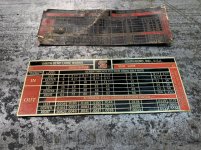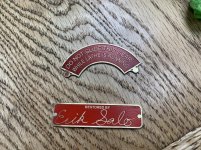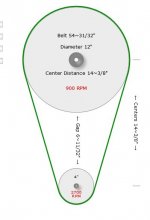I can’t say it’s a NASA quality instrument, but I calibrated the tach with a handheld laser tach. You can see it in this Instagram link when I was proofing out the circuit:
Tom Utley on Instagram: “It works! Custom #automotive #diesel #tachometer from @speedhut using the #pulse #signal from a #halleffect #gear tooth #sensor. I could…”
Also, I’ll reiterate, I don’t recommend running high speed for long periods or under heavy cutting pressures. For an occasional high speed finishing pass on small diameter workpieces, though, I believe it won’t hurt the machine.
Sent from my iPhone using Tapatalk
While I know some speed manipulation can be done with a vfd, I would not have guessed so great.
For perspective, I do some power generation work where a diesel engine turns a generator end, which is very like and electric motor. The engine speed is directly tied to cycles or hertz. Depending on the gen end's internal setup, with how many poles inside, it is designed to reach a certain hz at a given rpm range.
In the USA we use 60hz. The two most typical gen ends are designed to reach 60hz at either 1800 rpm or 1200 rpm. For 1800 rpms, every cycle/hz is equal to 30 RPM's. 60hz x 30 = 1800. For 1200 rpm gens, its 20 rpms for every cycle. 60hz x 20 =1200 rpm.
In dealing with mechanical engines (not electronic controlled fuel system), I generally set speeds to 60.5hz or 61hz. We do this to help engine recovery when a hard load is applied to electrical system, like someone turning on a higher hp electric motor. This way gen set runs no-load at 61hz, but when sudden load is applied, the rpms only dip down to 60hz.
As part of what I do, many packages are set up with protections to immediately shut engine down if there is a problem. One of those protections is overspeed. The overspeed protection is not just for electric spike protection, its there to keep engine and gen end from blowing apart.
I actually hate running those tests. I like 63.5 to 64hz trip points. But often I see 65hz or more in testing. I gotta tell you, when you're next to it, and hitting those speeds, your butt really tightens. It just sounds really unnatural, and I'm waiting for the big bang, lol.
And just thinking of that, 65 cycles, on an 1800 rpm rating, that's only 1950 rpm. That's less than 10%.
Assuming normal lathe spindle top speed at 1000 rpm, and if your electric motor is rated 1800 rpm. To hit 1800 rpm spindle speed, man your motor must be hitting 3000 plus rpms. Wow, that's crazy. I'd really not guess you could do that kind of percentage increase without pieces flying.





